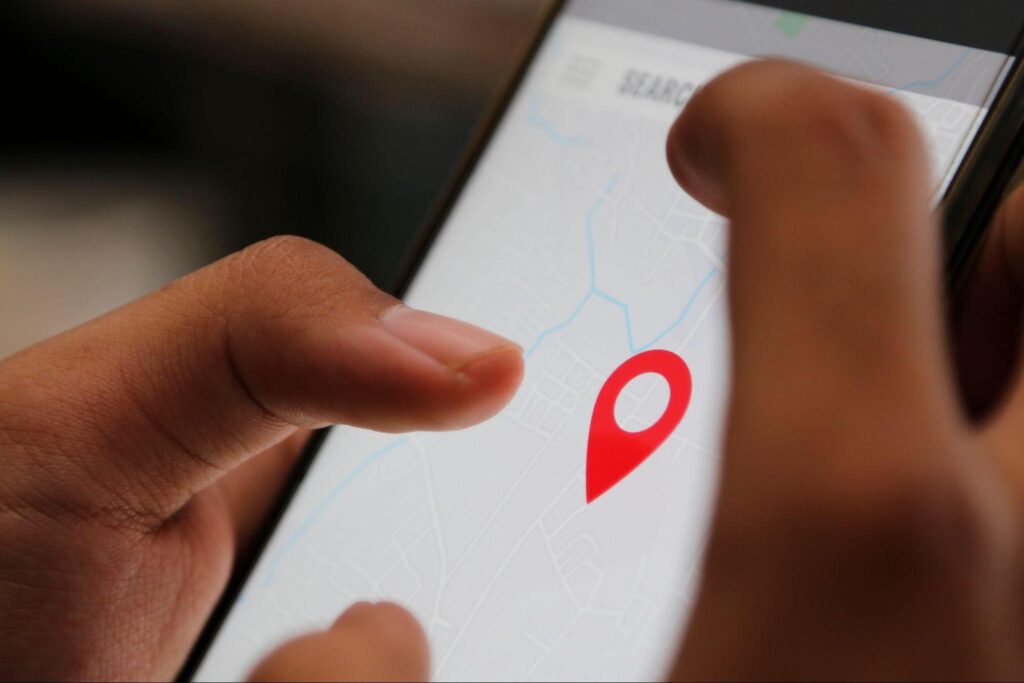Have you ever wondered where someone is and don’t want them to know about it? Whether you’re trying to see if your teenager is at a party instead of studying or just curious about an old friend’s whereabouts, tracking their location can help you get the answers you need.
There are several ways you can learn how to track someone’s location without them knowing, such as checking their social media, looking for geo-tags on their photos, attaching Bluetooth tracking devices, and using reverse phone lookup tools. This article will guide you through all these techniques in detail.
Check Their Social Media
With the vast information people share online on social media, it’s easier than ever to track someone’s activities. With a quick scroll through a person’s Facebook timeline, you can check which locations they frequent, what their travel patterns are, and which regular commuting routes they use.
Similarly, people often tag their location in Instagram stories and posts along with snippets of their daily lives, such as outings and interactions with friends and family. If you want an extended view of their activities, you can also check any saved story highlights on the person’s profile.
When you want real-time updates, you can check the exact current location of your contacts on Snapchat if they have the feature enabled.
When tracking someone through social media, you can create a fake profile with a realistic name, photo, and backstory. This will allow you to view posts, stories, and check-ins without raising any suspicion.
Check for Geo-Tags on Photos
Geotagging is another subtle yet effective way to track someone’s location. When you take a photo or video from your smartphone, there’s often a geotag embedded in it, which can reveal where it was taken.

If you have a personal connection with the person you’re tracking, they might have shared their photos with you directly through Google Photos, iCloud, or shared albums on social media.
With a single swipe up on a photo, you can easily see when and where it was taken. There are online tools that can extract and display detailed information, including GPS coordinates.
Attach a Bluetooth Tracking Device
Bluetooth tracking devices like Apple’s AirTag can also come in handy. Once you pair it with your smartphone or tablet via Bluetooth, you can place the tracker in someone’s belongings, such as a bag, car, or clothing item. The device connected to the tracker can view its real-time location on the map.
Keep in mind that you can’t use Bluetooth trackers on someone without their permission because of privacy laws and regulations. Just make sure you know the rules in your area before you use this method.
Use a Reverse Phone Lookup Search Engine
A reverse phone lookup search engine is one of the most straightforward and reliable techniques for learning about someone’s location without them knowing. Since this technique relies on data from public sources, the risk of legal trouble is much lower.
This tool lets you look up information about a person using their phone number, such as their current location and past addresses. It often also shows you social media handles linked to the number, giving you access to their online profiles and more context about their activities and connections.

Using a reverse phone lookup tool is pretty simple. All you need to do is enter the phone number of the person whose location you want to know in the search bar, and the tool will search through multiple public databases for any relevant data. It will then give you a report that contains details like the person’s name, location, and often other contact details.
Once you have all this information, make sure you cross-check it with other methods or contact professional services that specialize in background checks. This can help verify its authenticity.
Gear up for Your Investigation
Tracking someone’s location without them knowing is a thrilling concept for some, but you might find yourself in hot water if you violate any ethical or legal policies. Make sure to use these tools respectfully and keep others’ privacy in mind as you start your investigation.
As long as you use them responsibly within legal boundaries for a clear and legitimate purpose, you’re good to go!



